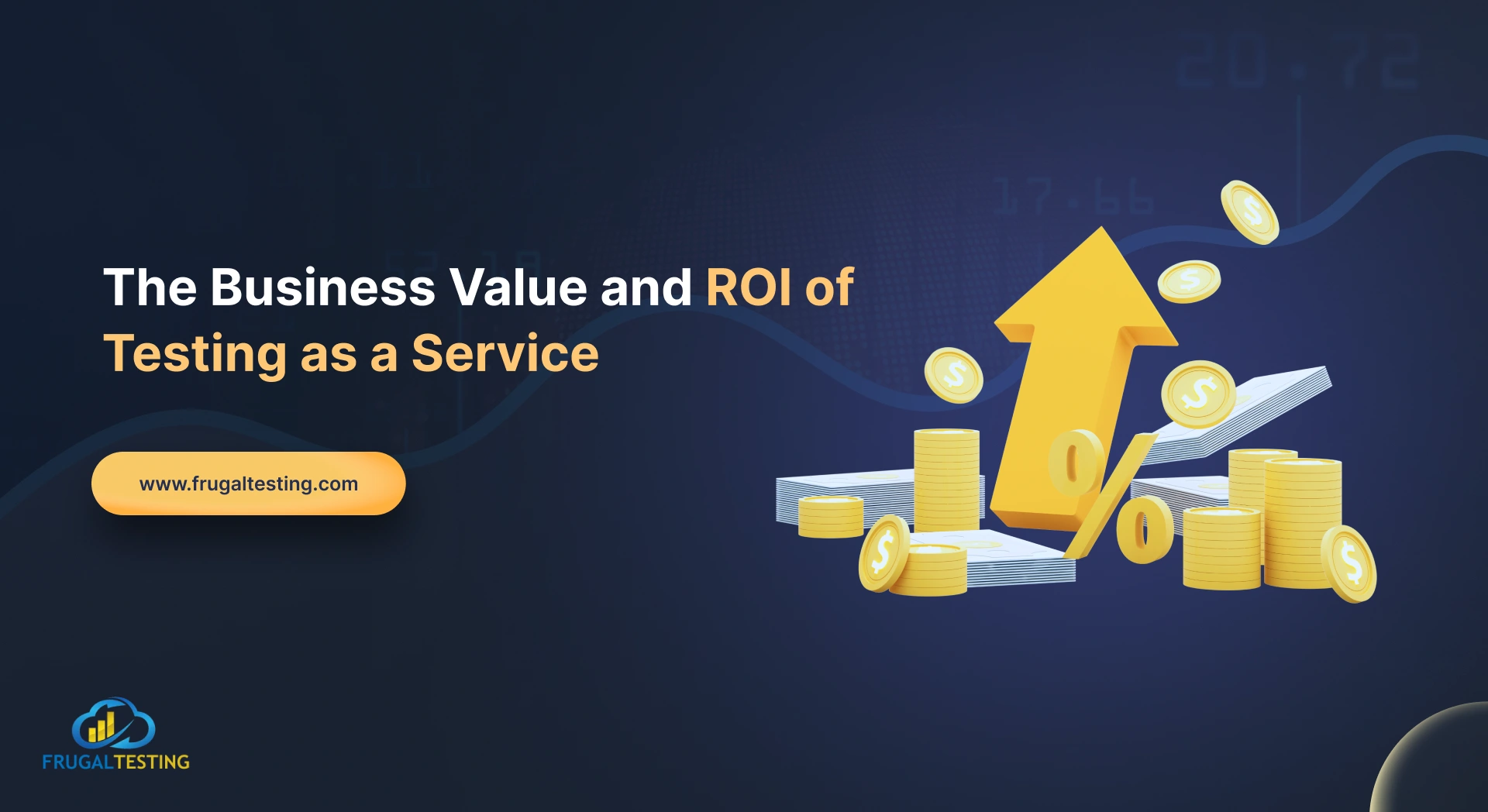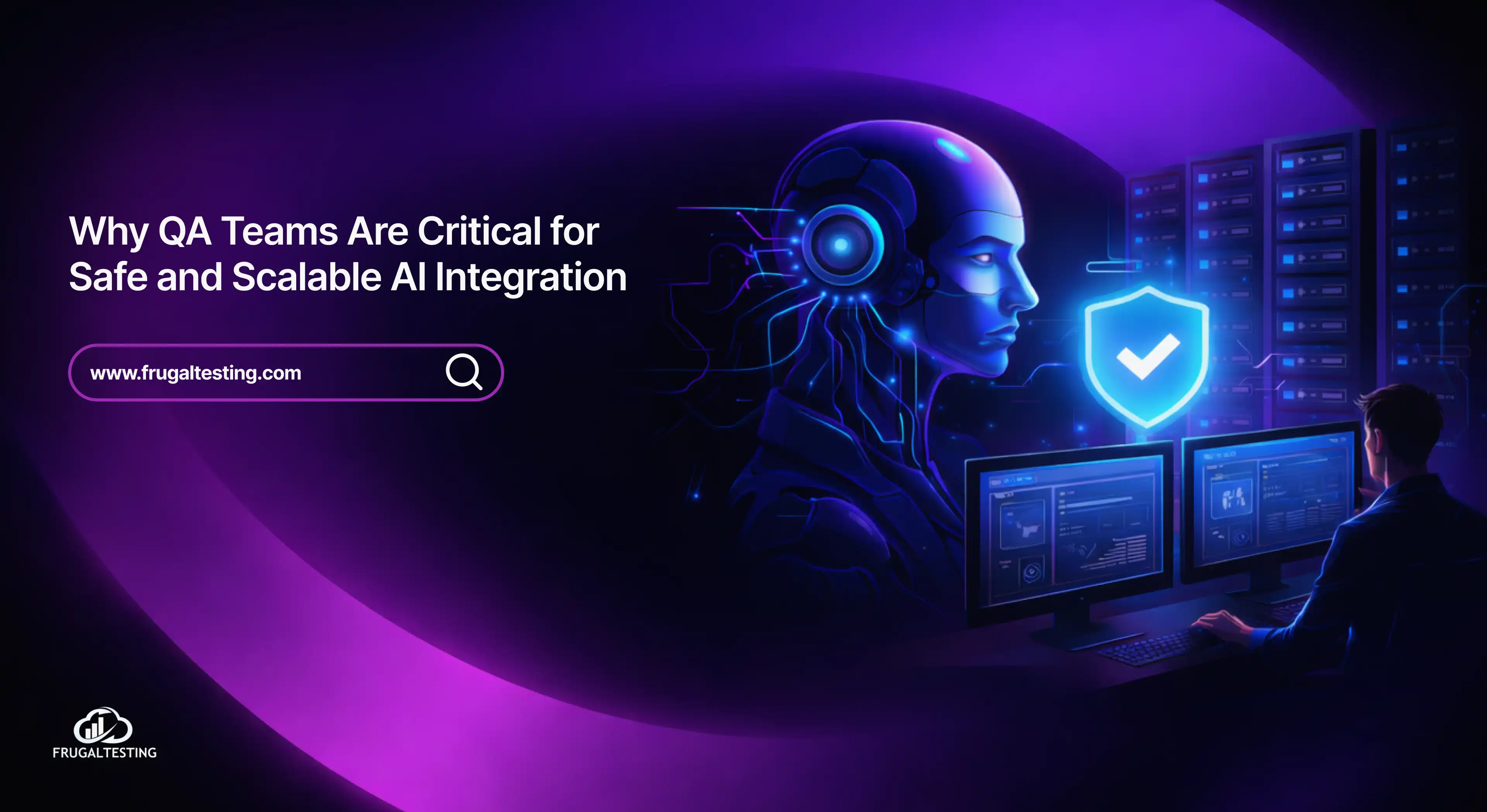Spotify, a leading audio streaming platform, delivers high-quality streaming audio services to over 550 million monthly listeners. Whether through the Spotify app, web player, or browser, it ensures smooth playback with low latency and strong backend performance. This consistency is achieved through a mix of test automation, load testing software, and secure backend validation.
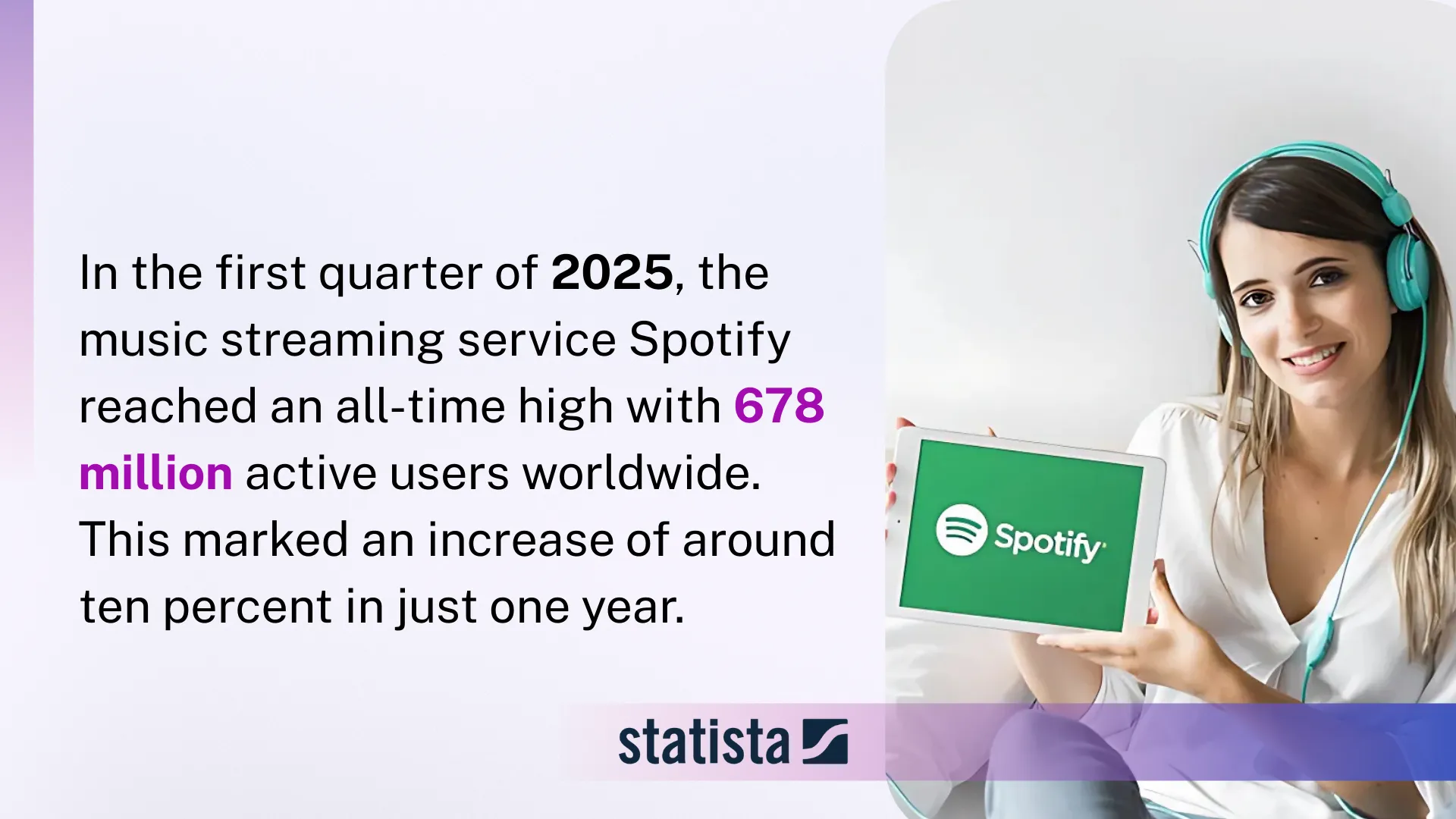
By partnering with expert test automation services, Spotify maintains speed and platform stability. This blog explores how methods like A/B testing, QA validation, and application programming interface security help ensure a seamless, scalable, and resilient audio experience across all user touchpoints.
💡 What’s Next? Keep reading to discover:
🚀 How Spotify ensures smooth, buffer-free playback for millions of listeners
🚀 Why latency and network variations are key testing priorities
🚀 Real-world testing methods for different devices, regions, and bandwidths
🚀 Key challenges in delivering consistent audio quality worldwide
🚀 How AI, adaptive streaming, and predictive caching will shape the future of music streaming
Introduction to Spotify Audio Streaming
Spotify audio streaming provides seamless access to music and podcasts across devices. Key features like Spotify Connect, Wi-Fi streaming, and cross-platform syncing enhance user experience by allowing flexible listening. With the help of adaptive audio technology, Spotify adjusts stream quality based on internet strength, reducing latency, buffering, and improving playback speed.
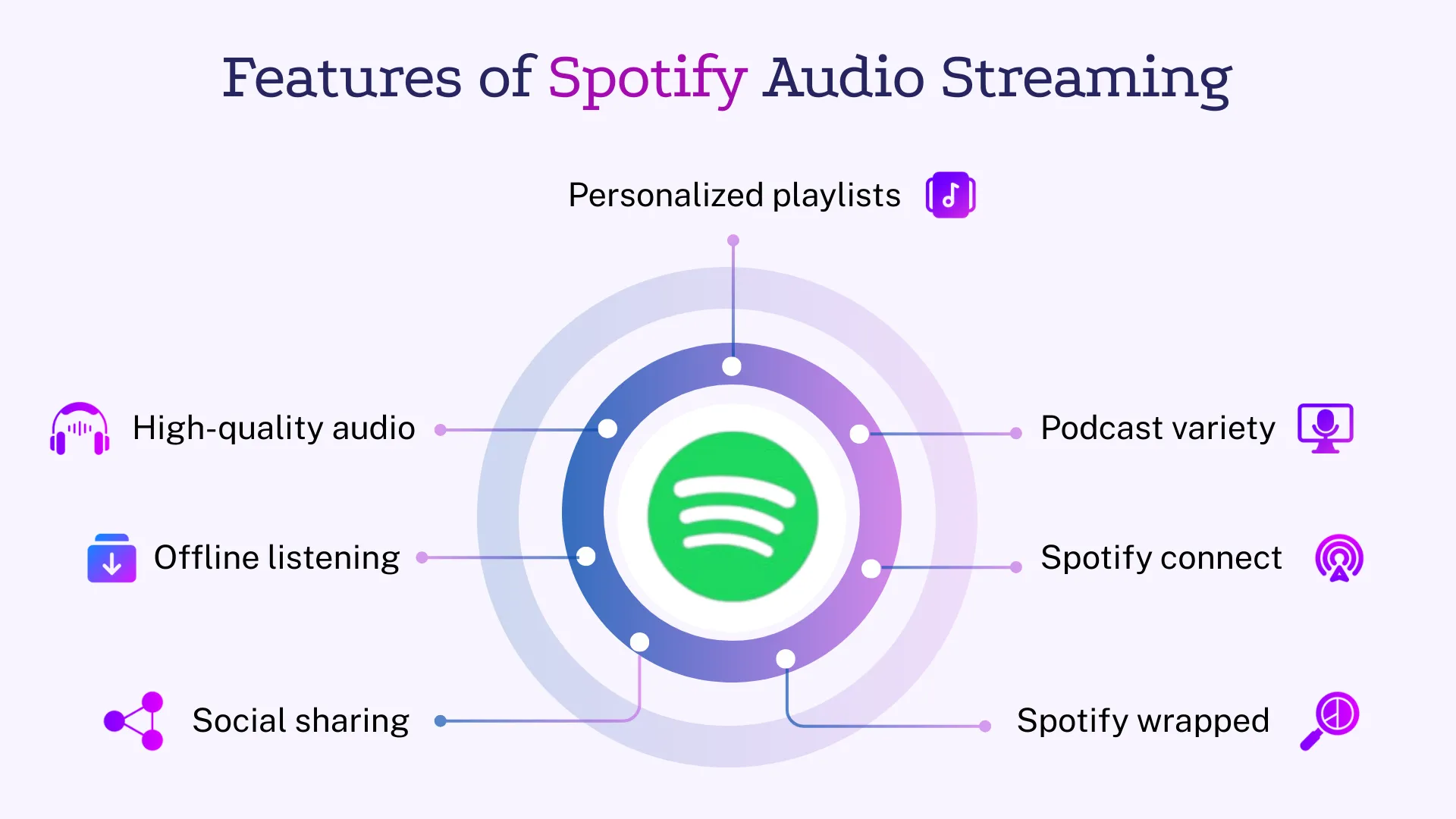
The platform also performs audio quality testing, compatibility testing, and uses digital denoising to deliver clear sound. These efforts ensure Spotify remains one of the most reliable music streaming platforms worldwide.
How Spotify Audio Streaming Works
Delivering seamless audio streaming at scale requires more than just playing tracks; it depends on real-time coordination across infrastructure, APIs, and network performance.
How it Works:
- User Request Flow
When users play a track via the Spotify app, web player, or Spotify browser, the request passes through an API Gateway and is securely authenticated using strong application programming interface security. - Load Distribution
A load balancer distributes traffic evenly across services, preventing Spotify down scenarios and ensuring smooth performance during spikes or live audio streaming events. - Microservices Handling
Spotify uses modular microservices for playlists, user data, and recommendations. These are constantly verified through test automation, automated software testing, and other types of software testing. - Streaming Optimization
Songs are chunked and compressed using Ogg Vorbis, then delivered via a global CDN for fast, buffer-free playback, even in low-bandwidth areas. This ensures Spotify stays among the best audio streaming services. - Real-Time Feedback
User data is captured in the Analytics DB to refine personalization and system performance. Updates are tested using A/B testing software, user testing software, and load testing software before release.
Architecture of Spotify's Audio Streaming System
Spotify’s backend is built for speed, scalability, and reliability to support millions of users streaming audio. Below is a simplified view of how its architecture is structured:
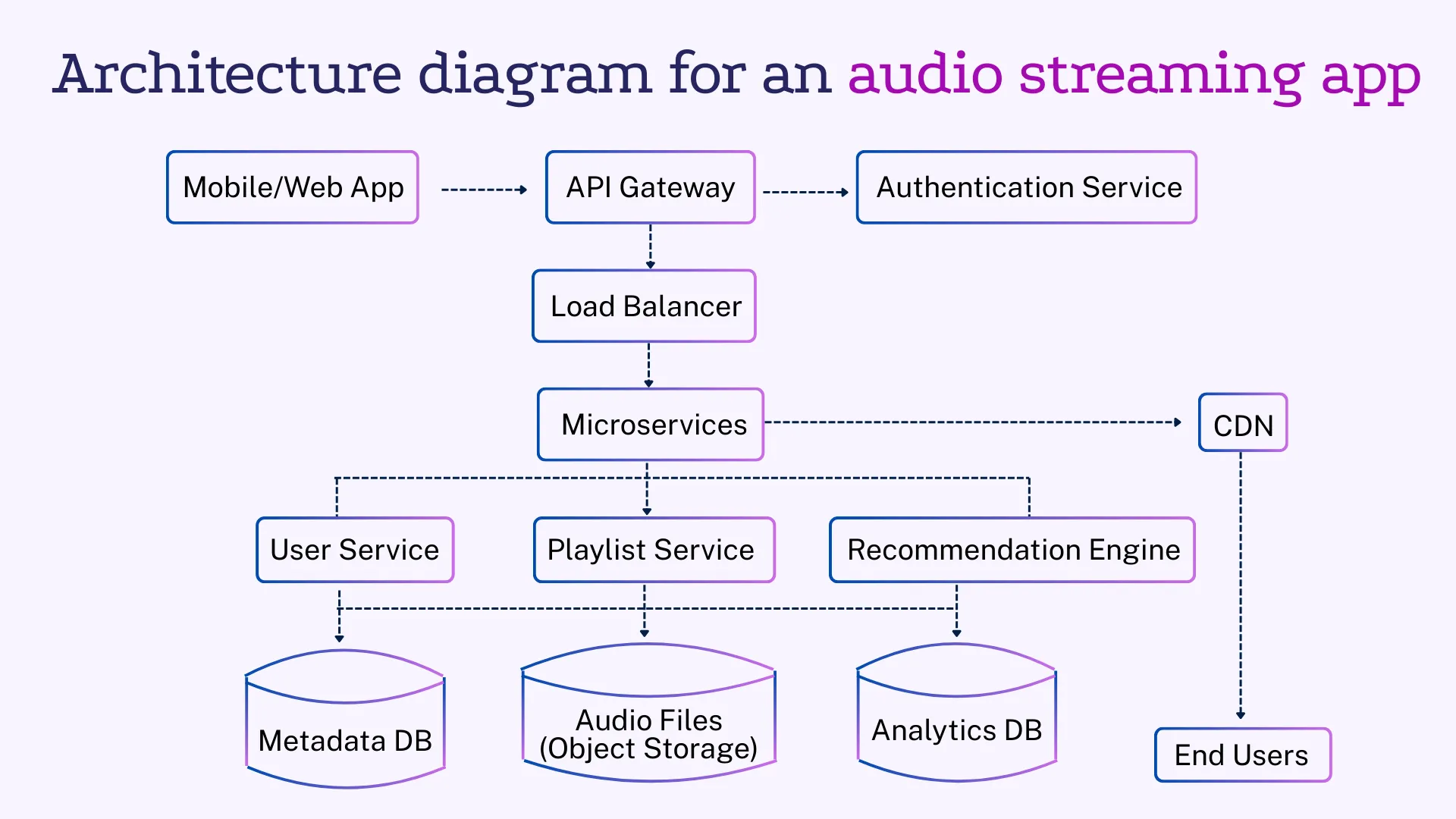
- Mobile/Web App: Acts as the front-end interface, sending requests to the backend via an API Gateway.
- Authentication Service: Verifies credentials and secures sessions using application programming interface security protocols.
- Load Balancer: Handles traffic spikes by routing user requests across multiple backend nodes for consistent performance.
- Microservices Layer: Divided into specialized services:
- User Service: Stores and manages user profiles using the Metadata DB, with ongoing checks using qa software testing.
- Playlist Service: Handles track queues and playlist logic; audio content is fetched from object storage.
- Recommendation Engine: Delivers personalized suggestions using machine learning algorithms, fine-tuned through a/b testing software and real-time data from the Analytics DB.
- CDN Integration: Compressed streaming audio files are served through edge servers to minimize latency and maximize playback quality.
- End Users: Whether using mobile devices, desktops, or connected devices, users enjoy uninterrupted listening backed by a fault-tolerant and scalable system.
Usability Testing for Seamless Experience
Spotify uses usability testing to deliver a smooth, intuitive user experience across its platform. It tests how users interact with key features like curated playlists, profile icons, and offline listening across all devices and networks like Wi-Fi and Cellular Streaming.

Key areas of focus include:
- Navigation flow: Ensures users can easily access music libraries, search, and recommendations across the Spotify browser, Spotify app, and web player.
- Device responsiveness: Validates streaming quality and functionality across desktops, smartphones, tablets, and wearables using performance testing and automation test tools.
- Behavior simulation: Tests user scenarios like switching playlists, toggling offline mode, and adjusting Auto Adjust Quality with automation test frameworks.
- UI feedback: Collects real-time data to fix Spotify app interface issues, enhancing app stability and experience.
- Cognitive ease: Simplifies music discovery, playlist navigation, and boosts session length using usability testing software and test automation services.
A/B Testing for Feature Optimization
Spotify implements A/B testing to refine its features based on real user feedback and behavior data. This method allows Spotify to compare multiple feature versions, like UI designs or algorithm updates, for better performance and user satisfaction.
Key areas of focus include:
- Feature comparison: Tests different versions of homepage layouts, playlist sorting, and Spotify Wrapped elements across users using A/B testing platforms and automation testing tools.
- User segmentation: Targets test groups based on listening habits, devices, and geolocation to ensure accurate test data collection and outcome prediction.
- Performance metrics: Measures user engagement, click-through rates, and retention to validate new features using data analytics and backend testing integration.
- Rollout validation: Gradually rolls out winning variants to the Spotify web player, Android app, and iOS app using automation pipelines.
- Decision support: Uses statistically significant results to guide product updates, improve UI design, and align with Spotify’s music streaming optimization strategy.
Network Simulation Testing for Real‑World Scenarios
Spotify performs network simulation testing to validate stable streaming quality and audio quality across varying network conditions, like weak Wi‑Fi streaming or fluctuating mobile data. This is vital for the platform to be recognized as one of the best audio streaming services globally.
Key areas of focus include:
- Latency & packet loss simulation: Evaluates playback interruptions for audio live streaming, focusing on stream receiver, TCP/IP standards suite, and buffer-free performance.
- Bandwidth throttling tests: Ensures Spotify app, Spotify browser, and Spotify web player adapt via Auto Adjust Quality even under capped data speeds.
- Compression testing: Validates the use of lossy compression, sampling rates, and data compression techniques on audio data to preserve CD quality playback.
- Tooling support: Uses test automation services for regular network testing workflows.
- Global scenario modeling: Simulates conditions across countries and content delivery networks to optimize music catalog access everywhere.
Compatibility Testing Across Devices and Platforms
Spotify uses compatibility testing to ensure seamless playback quality and feature parity across platforms, critical in a fragmented music streaming industry.
Key areas of focus include:
- Cross-platform validation: Checks consistency across the Spotify app, web player, and browser on different OS versions.
- Streaming performance: Monitors audio streaming services across devices, ensuring high streaming audio quality on smartphones, tablets, and desktops.
- Interface testing: Validates the user interface, social features, and app widgets like profile icon and music discovery modules.
- API integration checks: Verifies music library APIs, subscription model flows (Free vs. Spotify Premium), and User Centric Payment System behavior, also ensuring legal compliance with music licenses and music labels contracts.
- Quality assurance tools: Employs qa software testing, automated software testing, and test automation to cover multiple combinations efficiently.
Load Testing for High Traffic Events
Load testing lets Spotify prepare for high-demand periods, like album launches or global campaigns, so the experience remains flawless for millions of Spotify monthly listeners.
Key areas of focus include:
- Peak load simulation: Tests system behavior when streaming surges hit content servers during major releases.
- Streaming servers stress-test: Ensures streaming audio continues uninterrupted during mass playback sessions.
- Traffic performance metrics: Measures response times, skip rates (like skipping music spikes), and sound spilling effects.
- Automation tools: Leverages load testing software and test automation services for accurate stress simulations.
- Revenue impact analysis: Evaluates risks to advertising revenue streams, Spotify plans, and live audio streaming operations under heavy loads.
Test Automation for Rapid Releases
Spotify relies on test automation for swift, reliable updates without compromising streaming music quality or system stability.
Key areas of focus include:
- Regression safety net: Automated tests ensure new versions don't introduce bugs, preventing a Spotify down experience.
- End-to-end feature validation: Covers UI, playback, audio streaming services, and backend flows like licensing checks for record labels and content creation.
- Continuous Release pipelines: Integrates automated software testing, automation test suites, and other types of software testing in CI/CD environments.
- Performance validation: Tests streaming quality during releases, including cloud storage syncs, streaming server load, and API responsiveness.
- Monitoring updates: Verifies application programming interface security, managing secure flows with partners like music labels and external tools.
API Testing for Backend Reliability
API testing ensures Spotify’s backend systems, from playback logic to subscription workflows, remain reliable, secure, and performant.
Key areas of focus include:
- Endpoint functionality: Validates proper behavior of music library APIs, search queries, and playlist endpoints in audio streaming platforms.
- Load & stress resilience: Ensures APIs handle high-concurrency requests from Spotify app, browser, and web player, especially during peak usage.
- Security enforcement: Uses security testing in software testing to uphold application programming interface security standards, protecting data and preventing breaches.
- Subscription flows: Tests Spotify Premium access, Spotify plans transitions, and User Centric Payment System interactions.
- Integration robustness: Validates connections to record labels, music labels, metadata servers, and support for digital music licensing.
Real‑Time Scenarios in Spotify
Spotify, known for its excellence in music streaming services, maintains world-class audio performance through real-time validation of its streaming infrastructure. Below are verified scenarios, each underpinning reliability for enterprise-grade streaming platforms.
1. High‑Load Testing During Spotify Wrapped
During the annual Spotify Wrapped campaign, millions of users simultaneously access personalized content, typically from early morning across time zones, creating a major network connection and load challenge.
Business Test Strategy:
- Used the in-house tool Moshpit to emulate tens of millions of concurrent requests across backend services, testing the streaming servers load behavior.
- Validated edge cases in sampling rates, diverse digital music payloads, and varied user profiles.
Result:
- Ensured smooth, uninterrupted Wi‑Fi Streaming and playback.
- Eliminated cases of Spotify down during high-stress events.
- Supported seamless scaling of content delivery and microservices.
2. Global Audio Delivery via CDN Optimization
Supporting consistent playback worldwide, including HTML5 Audio Streaming, requires a stable global delivery network especially across varying connection speeds.
Business Test Strategy:
- Consolidated CDNs using Fastly to cache and distribute content, reducing latency for UI features like Smart Shuffle and stereo audio playback.
- Executed performance testing on content delivery networks to validate caching, fallbacks, and recovery on poor networks.
Result:
- Elevated streaming quality and reduced buffering.
- Enhanced support for exotic features like spectral analysis, stereo versions, and spatial audio.
3. Scalable A/B Testing with Confidence Platform
Releasing new features like sound-enhancing gadget compatibility, improved navigation, or UI tweaks requires low-risk experimentation at scale.
Business Test Strategy:
- Built the experimentation engine for controlled A/B testing across the Spotify app, web player, and browser experiences.
- Closely monitored streaming performance during tests using automated software testing and test automation services.
Result:
- Incremental feature delivery with no downtime.
- Data-driven deployment of UI improvements, playback enhancements, and control features.
- Ensures compliance with licensing agreements and handles content disputes gracefully.
Most Common Challenges in Audio Streaming
Despite seamless Wi-Fi streaming, platforms like Spotify and Apple Music still face issues like latency, buffering, compatibility, and high data use. Some are listed below:

- Licensing and Regional Restrictions: Limited global licensing affects content access based on listener location, hurting personalized music discovery.
- Device and Network Compatibility: Variations in devices, mobile OS, and unstable Wi-Fi networks can disrupt smooth playback and streaming quality.
- Latency and Buffering Issues: High latency or frequent buffering, especially on 4G/5G networks, breaks continuous playback and reduces user satisfaction.
- Bandwidth vs. Quality Trade-off: Many platforms reduce bitrates on low bandwidth, compromising on HD audio, stereo effect, and vocal clarity.
- Platform-Specific Feature Gaps: Features like offline downloads, Spotify Connect multi-device sync, smart speaker integration, and lossless streaming are often locked behind premium plans or device restrictions.
Conclusion - Building Resilient Audio Experiences
Platforms like Spotify and Apple Music must tackle challenges like latency, buffering, and region-specific access. While features like Spotify Connect, Spotify Radio, Wi-Fi streaming, and cross-platform syncing add convenience, they still need better support across devices and regions, often limited by licensing contracts.
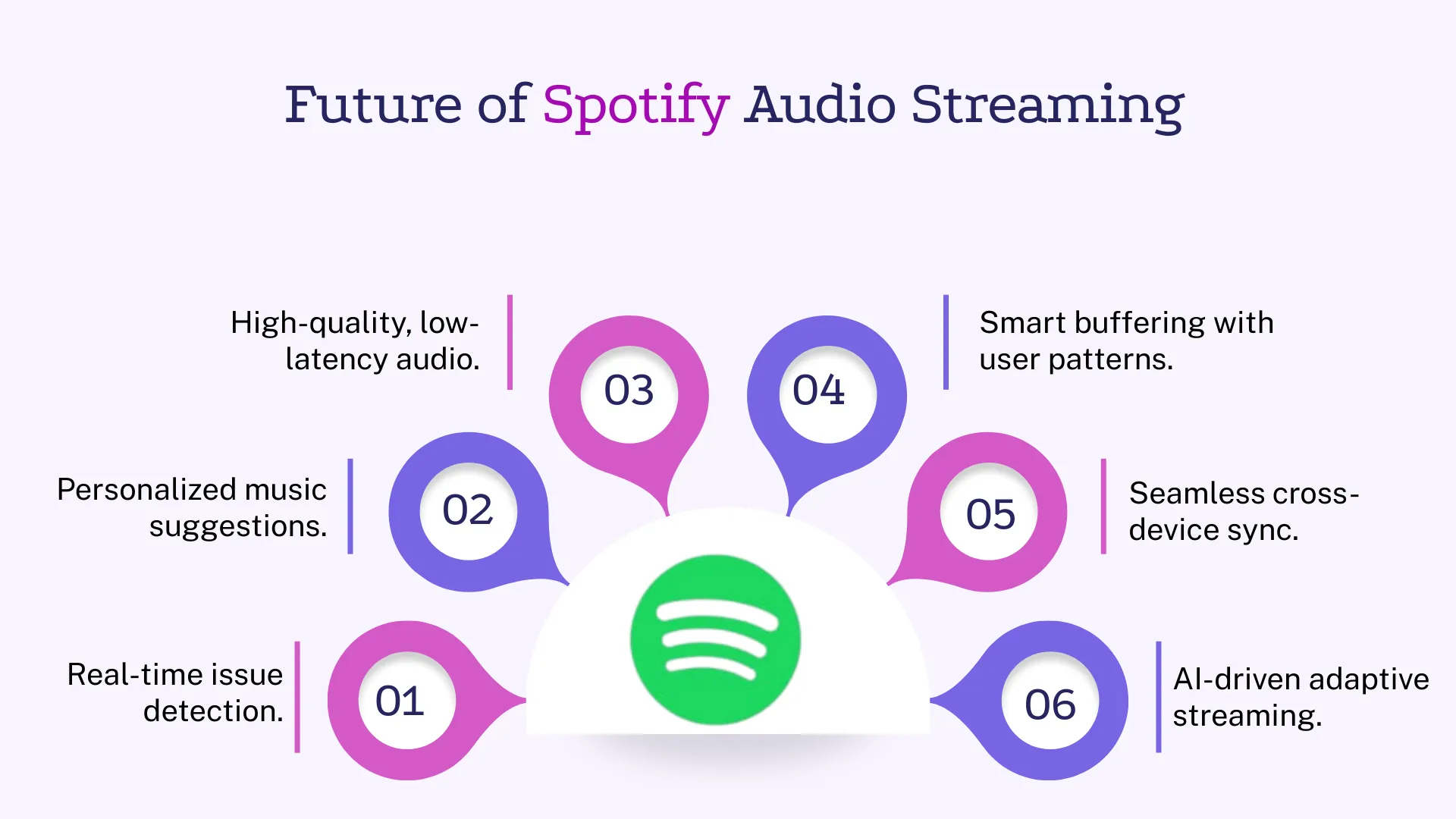
To ensure smooth playback, even in rural or low-bandwidth areas, platforms should adopt adaptive audio tech, digital denoising, geo-friendly delivery, and stronger device compatibility. Consistent performance testing, device testing, and network simulations are essential to build resilient audio, fast, flexible, and accessible streaming for every listener, anywhere.
Frugal Testing, a leading SaaS application testing company, is renowned for its specialized AI-driven test automation services tailored to meet the evolving needs of modern businesses. Among the comprehensive services offered by Frugal Testing are advanced Fintech Software Testing Services, designed to ensure security, performance, and compliance in financial applications. The company also provides cloud-based test automation services, enabling scalable, efficient, and cost-effective testing solutions.
People Also Ask
👉What methods are used to test the recommendation engine speed?
Spotify uses performance benchmarking, query optimization, and A/B testing to measure how quickly recommendations are generated, ensuring users get instant personalized playlists.
👉How does Spotify test audio during app version updates?
It performs regression testing, device checks, and automated playback validation, along with manual quality checks, to ensure clarity, volume balance, and smooth playback after updates.
👉How is Spotify’s caching system tested for performance?
Engineers run stress tests, concurrency simulations, and cache-hit ratio analysis under various conditions to verify stored audio loads instantly, even during peak traffic.
👉How does Spotify simulate user environments for testing?
Spotify uses network throttling, device emulation, and varied bandwidth simulations to recreate scenarios like low connectivity, 4G drops, or Wi-Fi to mobile data switches.
👉How does Spotify validate sound consistency across regions?
It conducts multi-region playback tests, codec checks, and waveform comparisons across servers, ensuring listeners worldwide experience the same high-quality sound.



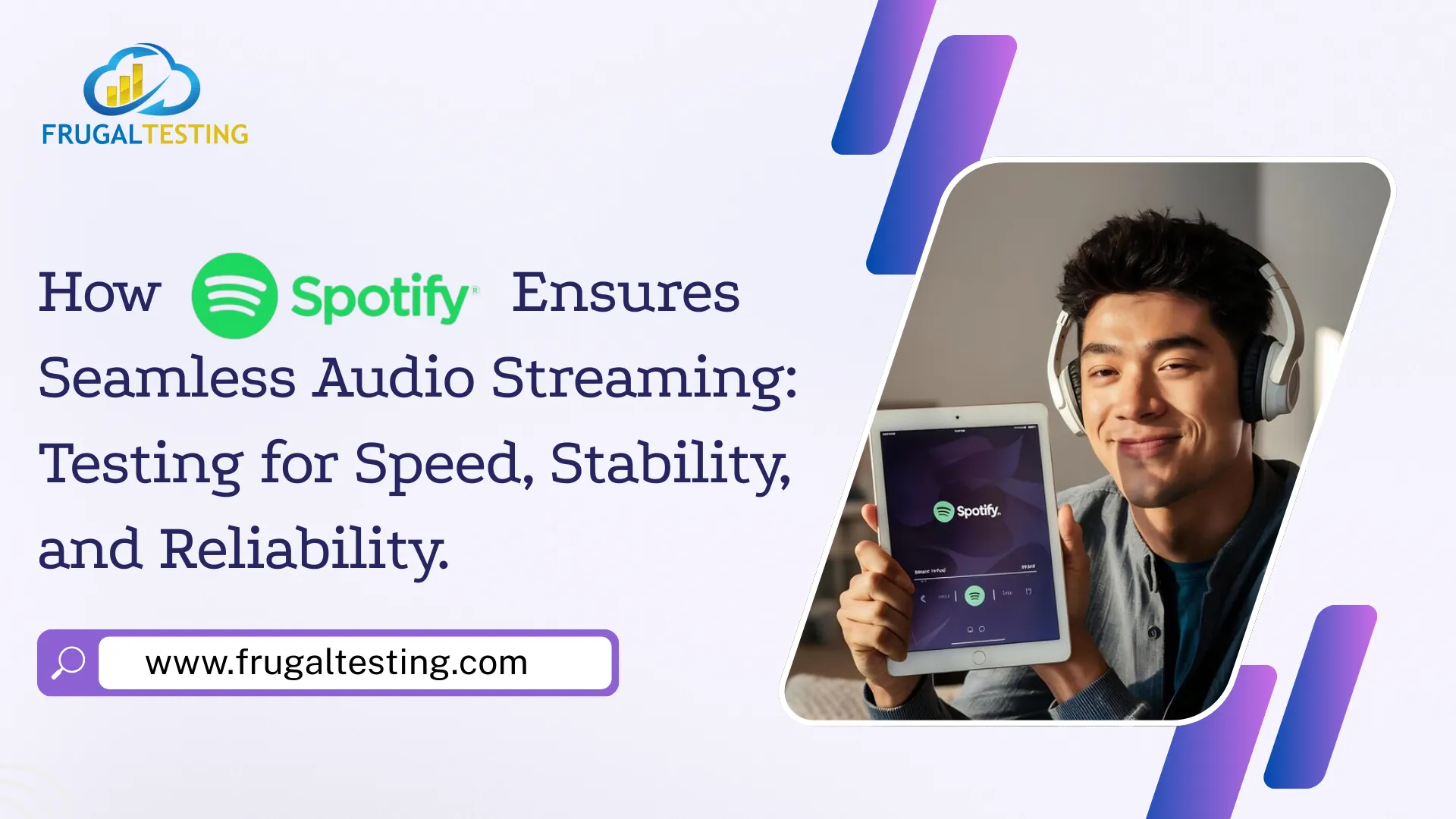

%201.webp)
